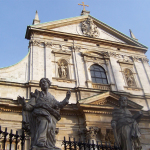The Remuh Cemetery
In 1533 the Jewish municipality Kazimierz (back then a separate city rather than a district of Krakow) bought a parchment of land between Szeroka and Jakuba streets and turned it into a graveyard. Twenty years later Izrael Isserles, an emigrant from Regensburg, banker for King Sigismund Augustus built a synagogue adjacent to the cemetery. After the wooden construction burnt down in 1572, it was replaced by a stone one. It was paid by Rabbi Mosze Isserles and dedicated to his son whose name, Remuh, is used to designate the cemetery and synagogue.
Moses Isserles was an eminent Ashkenazic rabbi, talmudist, philosopher and educator. He is buried at the Remuh cemetery. Two hands carved into his grave indicate his heritage.
Austrian authorities ordered the closing of the cemetery in 1799. A new one was built next to Miodowa street. Most monuments vanished forever and the cemetery was abandoned. During the occupation, the Germans used it as a dumping site. The synagogue was also destroyed. In 1955 it was under investigation by archeologists. They found hundreds of Renaissance stone tombstones buried 60 cm deep in the ground. They were probably hidden there around 1704 when Krakow was invaded by the Swedish army. There were 47 tombstones before 1939, then over 700 were discovered. The oldest one is 430 years old and the youngest 270.
Their decorative elements remained intact. There are sandstone hands, grapes, leaves and flowers garlands, images of lions, eagles, deers, goats. But something else was discovered at Remuh: sarcophaguses. They show the influence of Italian Renaissance on the cultural life of Krakow Jews. The reconstructed Remuh synagogue and the burial place of the Renaissance Jewish philosopher is a much visited place in the city today.






